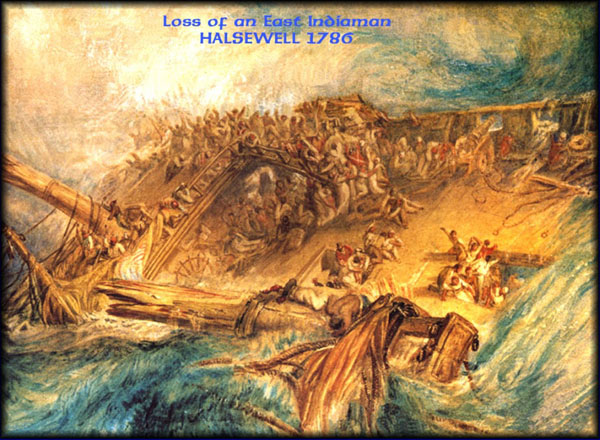JOSEPH MALLORD WILLIAM TURNER, R.A.(1775-1851)The Loss of an East Indiaman HALSEWELL

Painted c.1818 and originally exhibited in 1819 as Loss of
a Man of War. This was corrected when shown at Leeds in 1839 although it
underwent several changes of title later.
Eric Shanes has shown convincingly that this disaster was based on the tragedy
of the Halsewell, a merchantman, which sank on 6 January 1786. Only 74 of
the 240 people on board survived, the ship finally breaking up on the rocks
off Seacombe between Peverel Point and St Alban’s Head on the Isle
of Purbeck. There were many accounts of the disaster which continued to
appear until at least 1810 so that Turner would certainly have been aware
of them. He actually referred to the sinking in an unpublished poem he wrote
1811-13 to accompany the letterpress to Picturesque Views on the Southern
Coast. It is also likely that Turner knew Robert Smirke’s painting
The Halsewell, East Indiaman or the aquatint after it by Robert Pollard
published in 1786, as he and Smirke were well acquainted. But Turner has
infused his version with such a sense of terror, danger, catastrophic wreckage
and imminent loss of life that it bears little relation to Smirke’s
despite some similarities – the broken mizzenmast for example.




